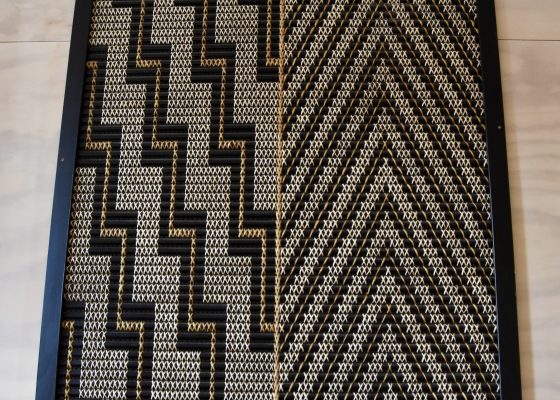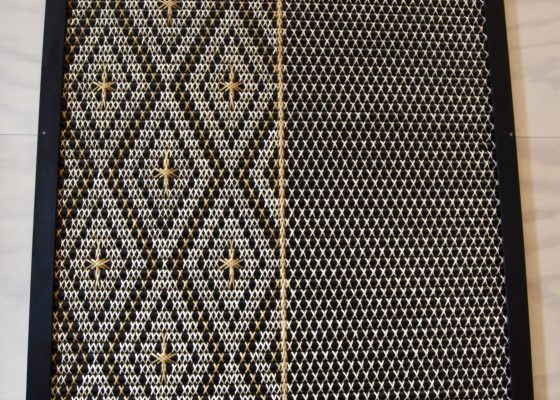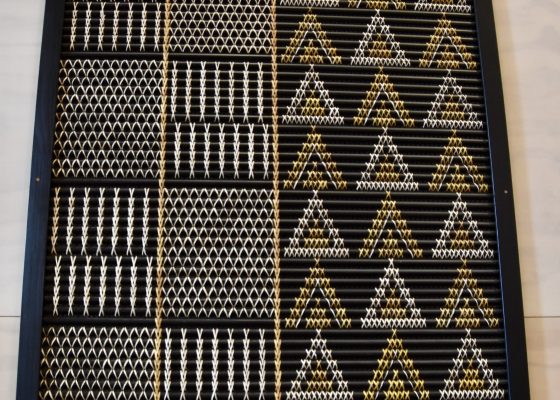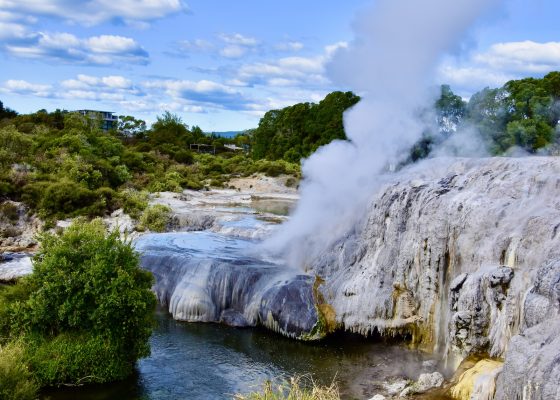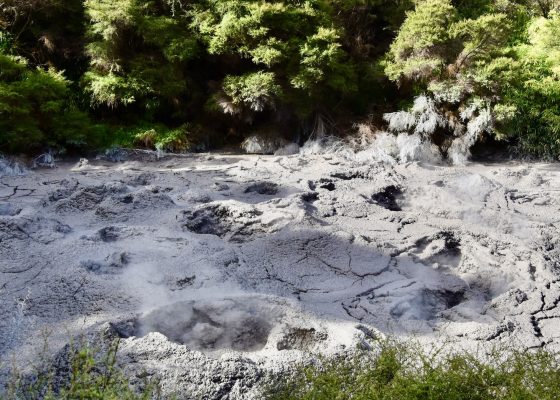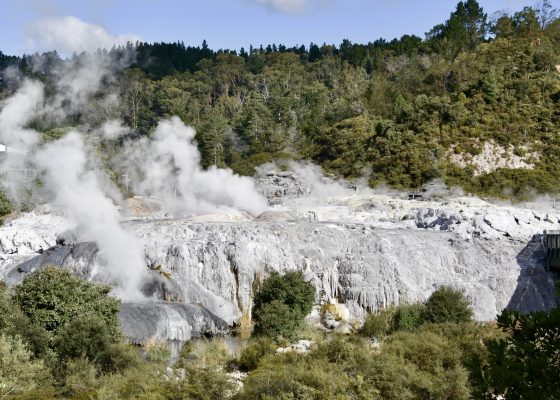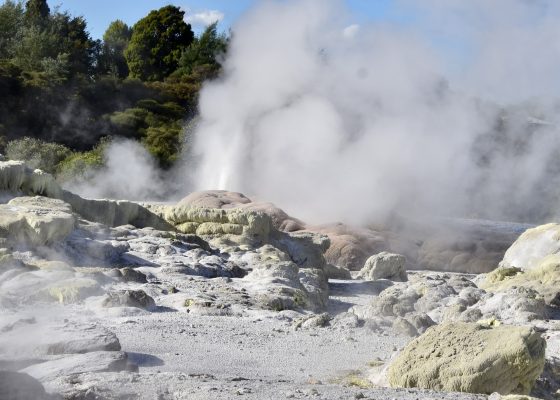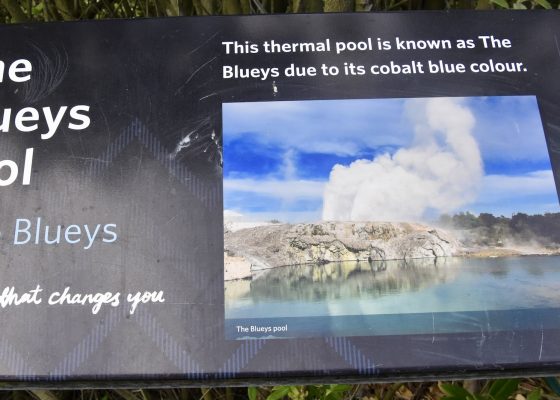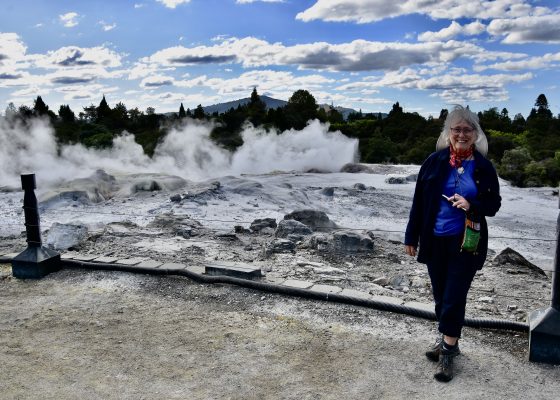A Maori Welcome – Glowworms, Geysers & More
It is the second full day of the March 2025 Adventures Abroad tour of New Zealand led by our friend Chris Tripodi, the world’s cheeriest guide. On the first day we explored New Zealand’s dynamic metropolis Auckland, visiting a number of different neighbourhoods, climbing Mount Eden to view the city from its highest point and learned a lot about the natural history of the country at the War Memorial Museum. We also got our first exposure to the Maori culture at both Maungawhau (Mount Eden) and at the museum. Today we will depart the city and visit a number of places that are owned and operated by Maori iwis (tribes) and conclude with a celebration of dance, song and food at a traditional Maori village. It promises to be a day we will long remember, so I hope you’ll join us.
Waitomo Glowworm Caves
One of the things that was high on my list to see in New Zealand was a glowworm cave and that is about to be fulfilled on our first stop of the day. So what exactly are glowworms and why do they seem to shine or glow in the dark? Bioluminescence is a fairly common biological phenomena found throughout the world – think fireflies and bioluminescent plankton for two. However, New Zealand has a unique species, arachnocampa luminosa which is actually a gnat of all things. If you are familiar with the word ‘arachnid’ you’ll know it refers to spiders, but these creatures aren’t spiders, but the larva do produce a silky substance that they hang from their bodies to capture anything that might be unlucky enough to fly into it, including adult glowworms. Yes, they might eat their parents. The bioluminescence is in effect a prop to lure the prey to the cave ceilings where they hang out. So unlike the glowworm in the classic Mills Brothers tune who uses his light to attract a wife, these are the world’s most vicious gnats.
However, they do make a gorgeous display as we are about to find out.
The Waitomo Glowworm Caves are a pleasant 2-3 hour drive southwest of Auckland. They were discovered in 1887 by Maori rangatira (chief) Tane Tinorau on his ancestral lands and opened to the public shortly thereafter. In 1906 the government took over the operation as it had become a major New Zealand tourist attraction. In 1989 that power grab was reversed and the land returned to Tane Tinorau’s descendent’s who run it today. There are a number of caves at Waitomo and various options for exploring them including black-water rafting, but by far the most popular is a 45 minute tour that includes entering the cave on foot and descending down to the water to board a boat that will take you to the cave entrance.
I wasn’t sure if the caves would be cold or damp, so while poking around the gift waiting for our allotted time slot, I found this gorgeous teal jacket at a really decent price. I couldn’t afford not to buy it, but since that purchase Alison has claimed it. It’s a great New Zealand memento and useful at that, unlike the two dozen fridge magnets I bought on this trip.
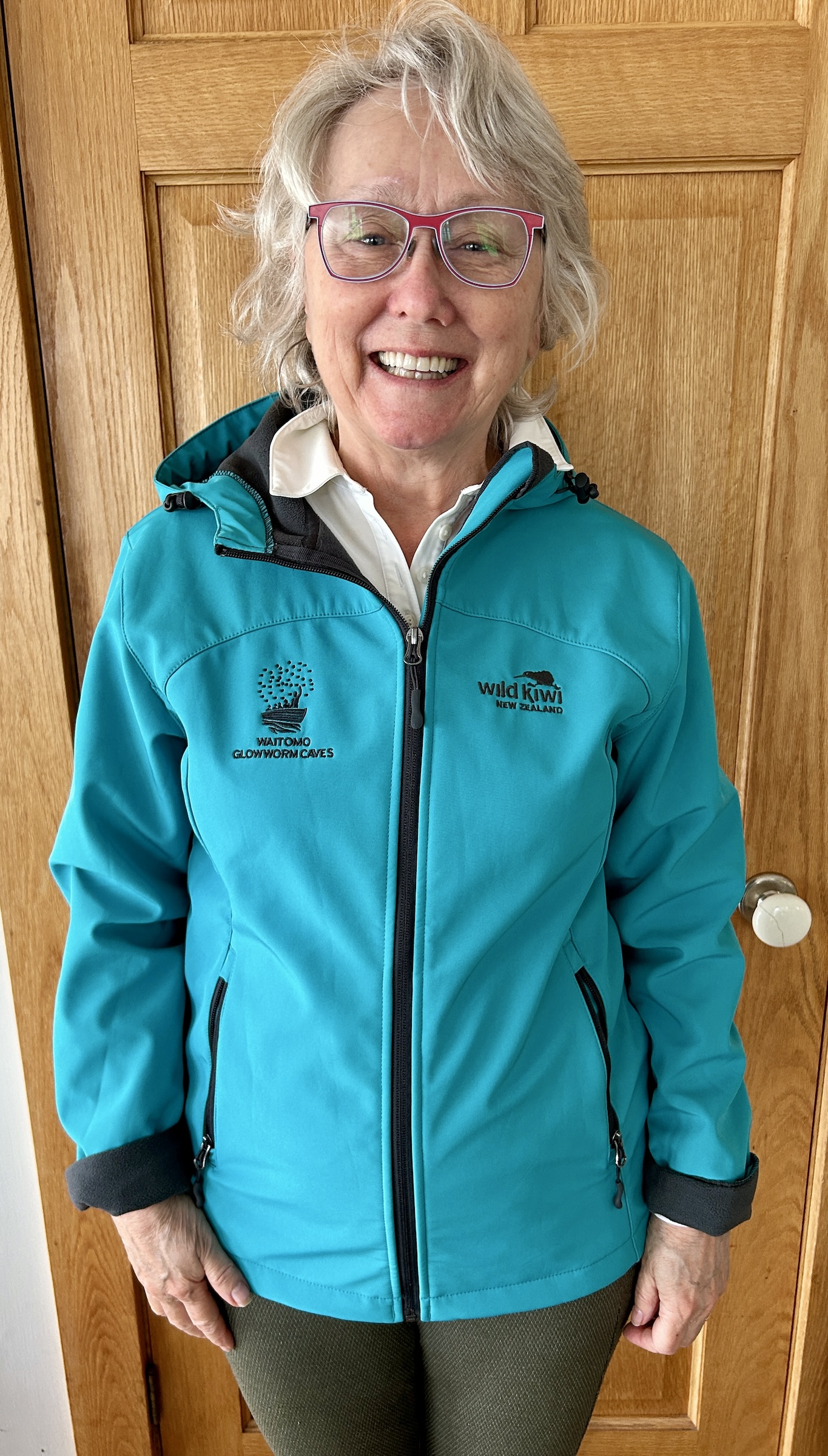
And no, you really don’t need a jacket or a rain coat to enjoy the glowworms.
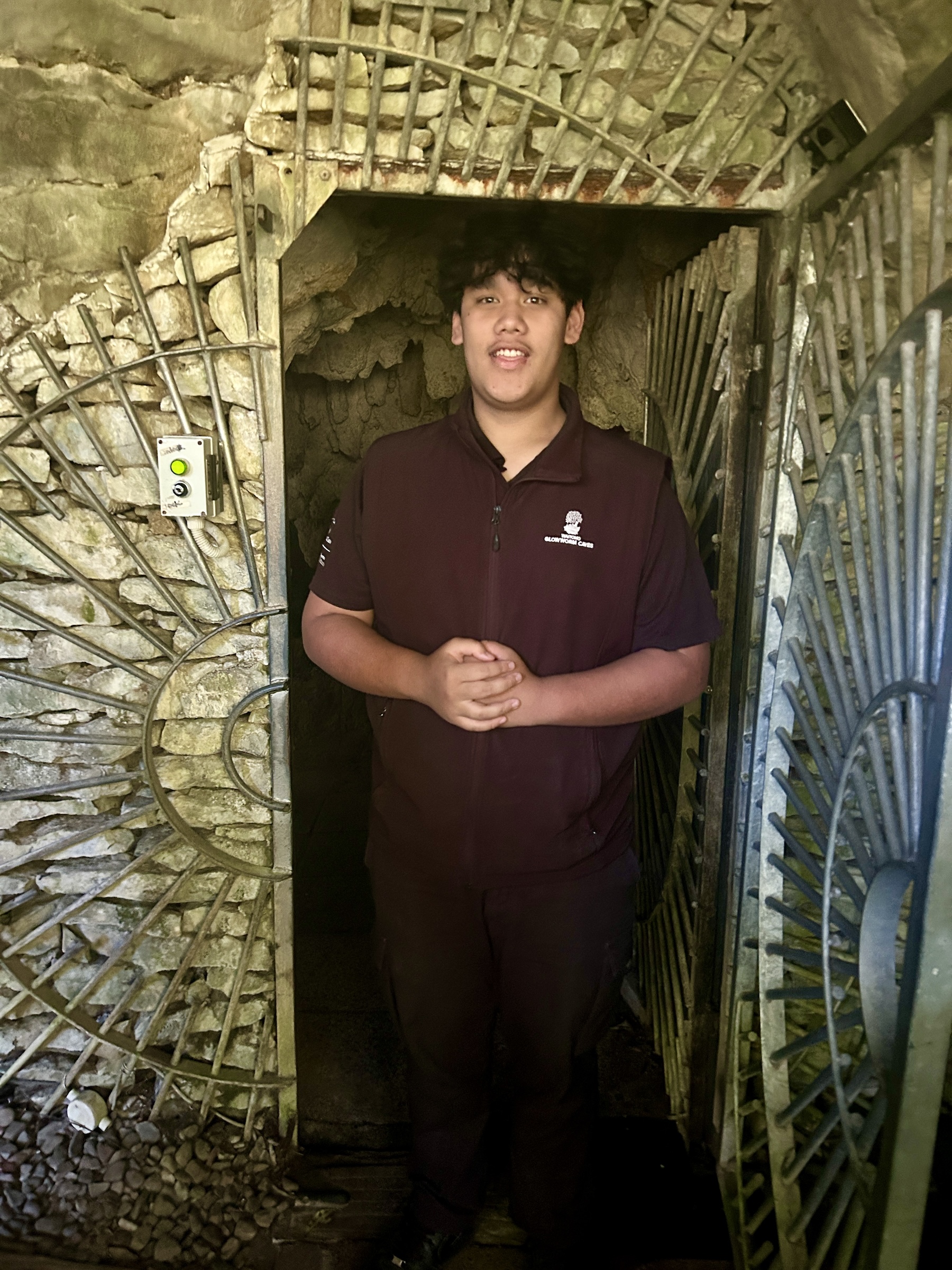
This young Maori lad opened the entrance to the cave and led us down to the boat waiting below. Now for pretty obvious reasons you are not allowed to take photos inside the cave. Glowworms don’t like any lights but their own or noise, so the boat trip takes place in total darkness and silence, but trust me the glowworms provide quite the display. There are a lot of videos on YouTube of glowworm caves, but most of them don’t really capture the magic of the Waitomo experience.
This one, using time lapse photography comes the closest, but it is a bit over the top; you won’t see a display this dazzling, but gives a pretty good idea of what you will see on the all too short boat ride.
Te Puia
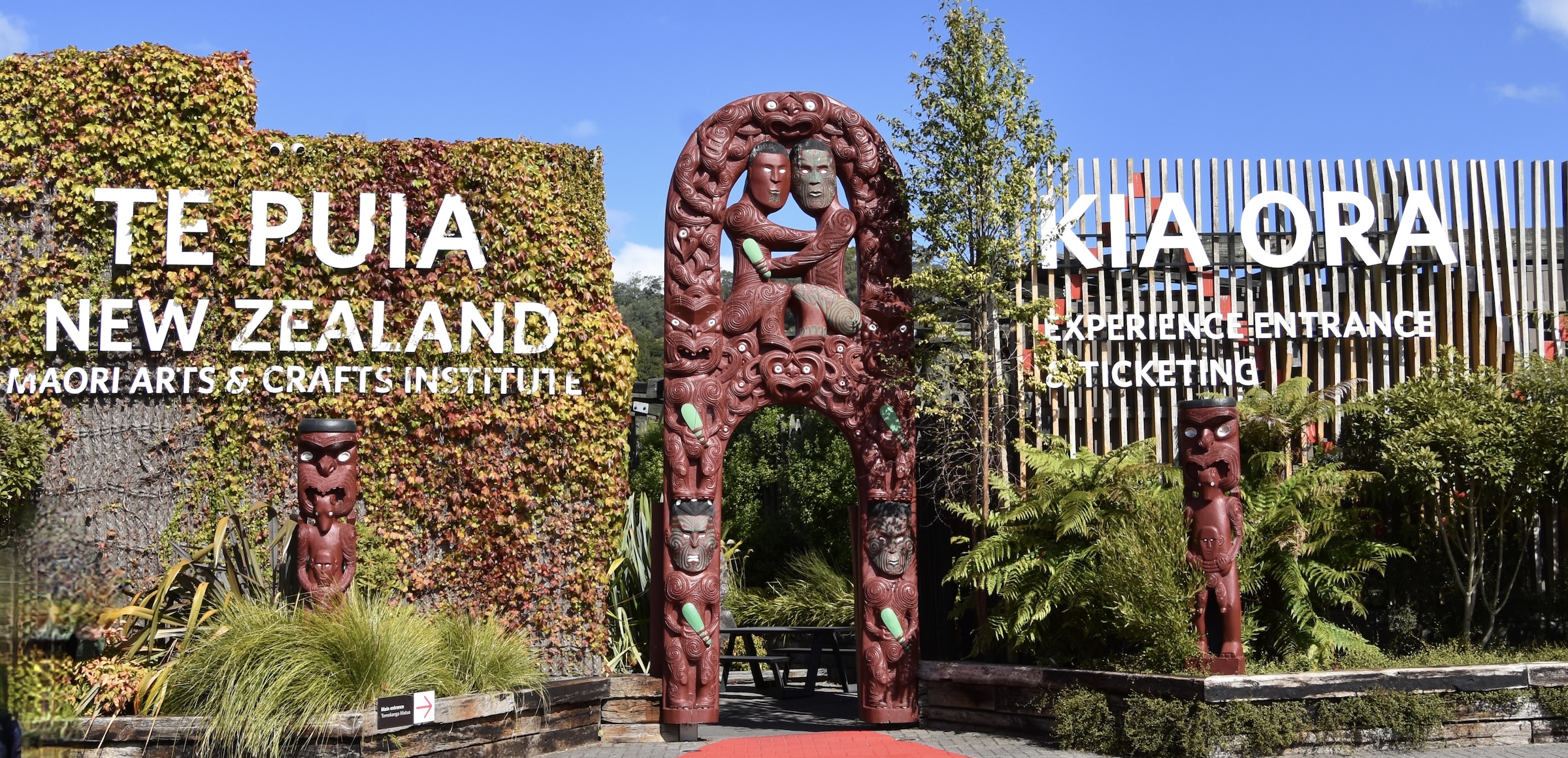
The second Maori owned enterprise we visited on this day was Te Puia, on the outskirts of the small city of Rotorua where we would spend the night. It features multiple experiences which include learning about traditional Maori craftsmanship, a chance to see a real kiwi bird and the big attraction, the geothermal activity that includes Pōhutu Geyser, the largest in the Southern Hemisphere. You can’t go to New Zealand and not see the geysers.
The visit begins with a guided tour of the New Zealand Maori Arts and Crafts Institute which was established sixty years ago by an act of Parliament to foster and teach three traditional Maori arts and crafts – wood carving, bone and stone carving and weaving. Each of the three has its own school within a large complex where we were allowed to look on as the students and teachers went about their business. This is the wood carving campus.
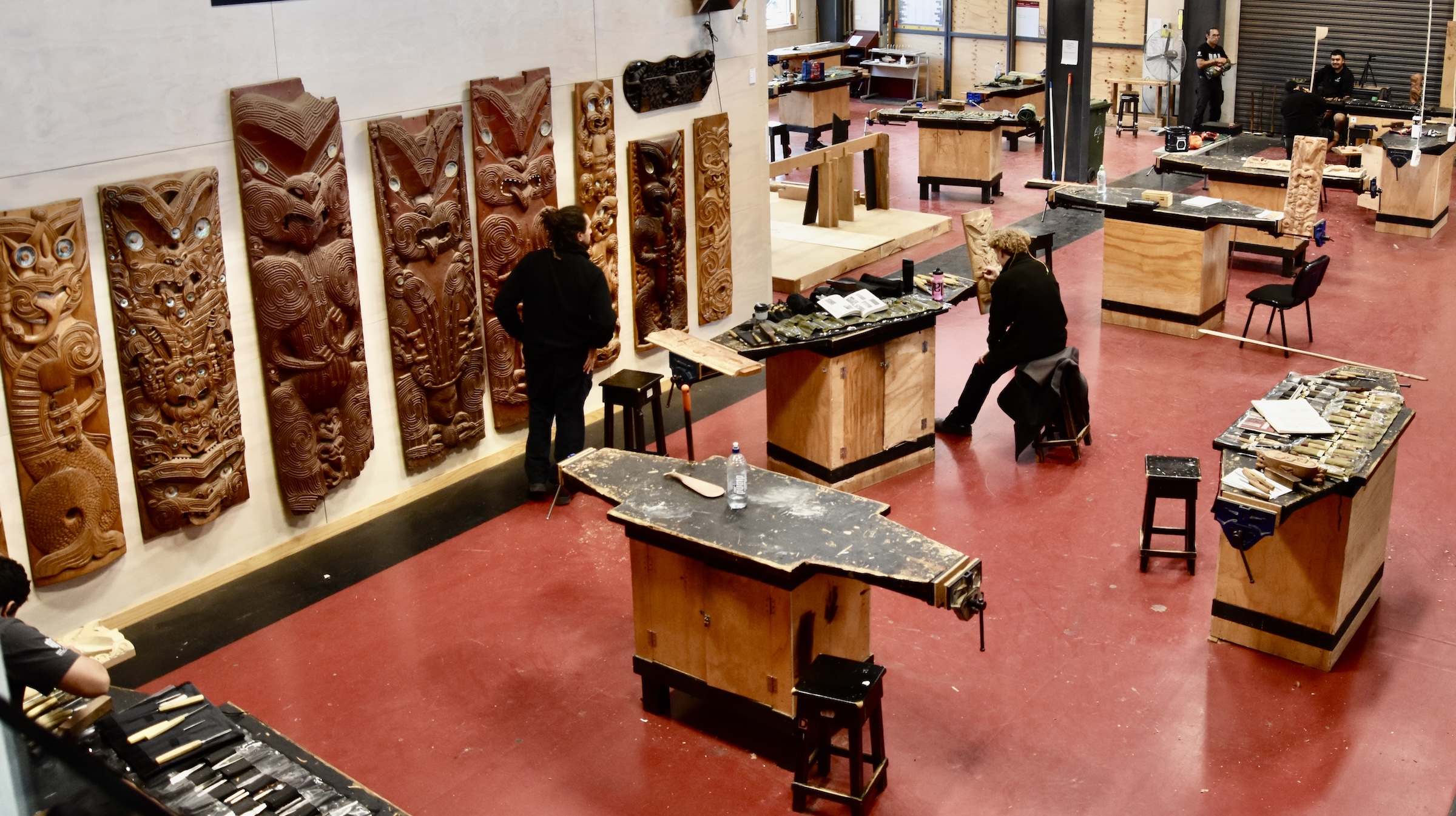
Some of the finished products, which takes months to make, are offered for sale. If you have an extra $16,000 NZD ($9,500 USD) to spare you can buy this exquisitely carved poupou by Maori artist Renata Manning (Ngapuhi).

The weaving school produces a great variety of goods including wall hangings, purses, hats and more. Here is a small gallery of three wall hangings in traditional Maori patterns. Double click to open and double click again to enlarge.
- Wall Hanging 1
- Wall Hanging 2
- Wall Hanging 3
After visiting the three branches of the New Zealand Maori Arts and Crafts Institute, it’s time to see the geothermal activity. But first, there is a brief stop at a small building especially constructed to house kiwi birds. As I noted in an earlier post, you’re very unlikely to see a kiwi in the wild, mainly because they are nocturnal. In the case of this kiwi exhibit, the birds are literally kept in the dark during visiting hours so that they become active and you can see them, but not take photos. I did get a short look at one kiwi, but that was it.
The visit to the geysers was led by a very pleasant young Maori woman along a dedicated pathway that ultimately leads to Pōhutu geyser. Now I have to give fair warning here – the pictures you see of Pōhutu feature it at its most violent when it can reach heights of 30 metres or almost a 100 feet. This aerial photo shows such an outpouring when it can compete with Old Faithful for size.
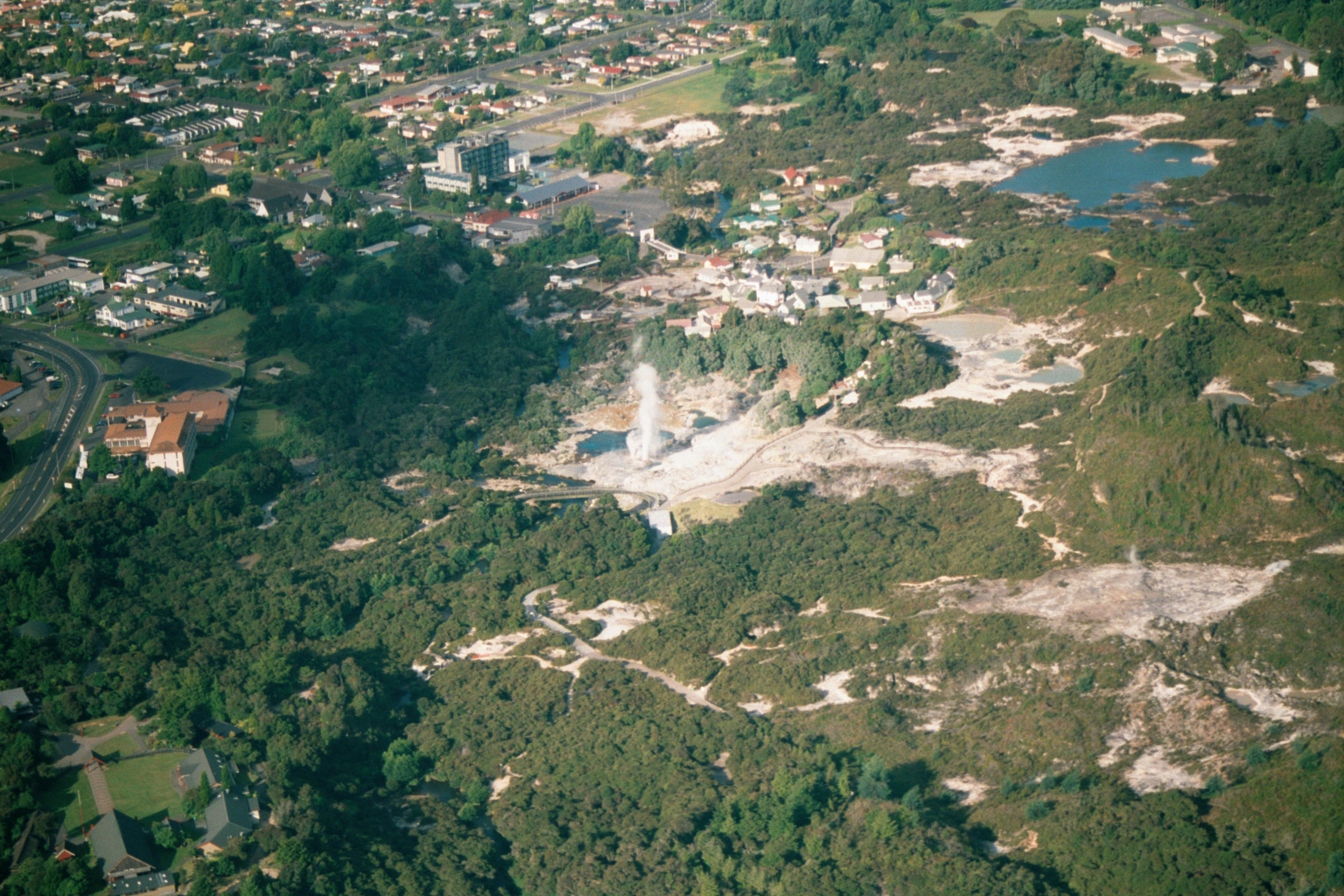
The problem is that Pōhutu is not as dependable as Old Faithful. You will definitely see it erupting, but it’s more likely to look like this.
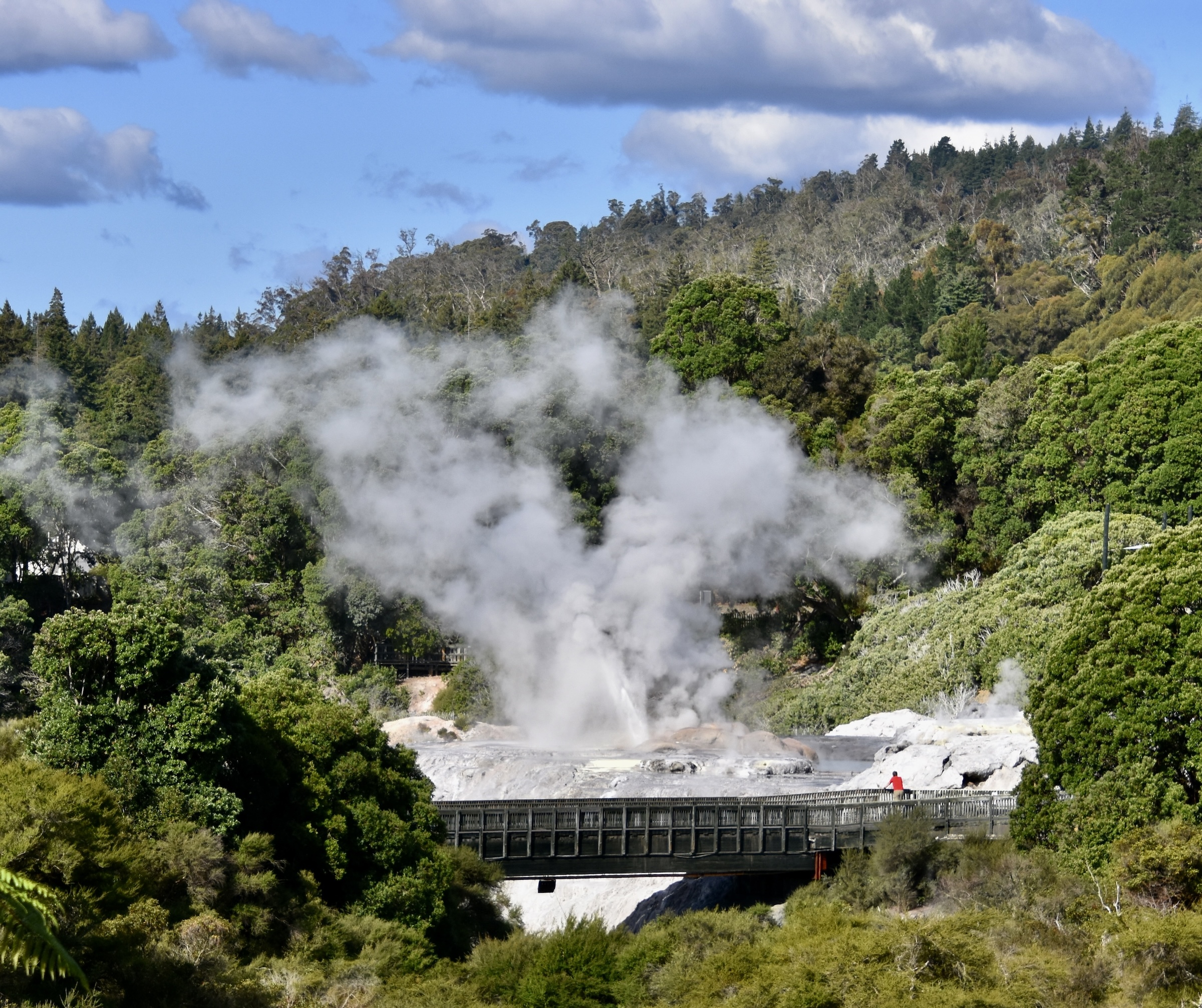
It’s still very impressive as is the entire Whakarewarewa geothermal area which includes bubbling mud pots and the cobalt blue Blueys. Here is a small gallery with some of the highlights.
One unexpected sight were these two swallows which as a species are actually called ‘welcome swallows’ so named because they are a harbinger of spring in Australia where they are native. In the mid 20th century they started showing up in New Zealand and became the only swallows found there.
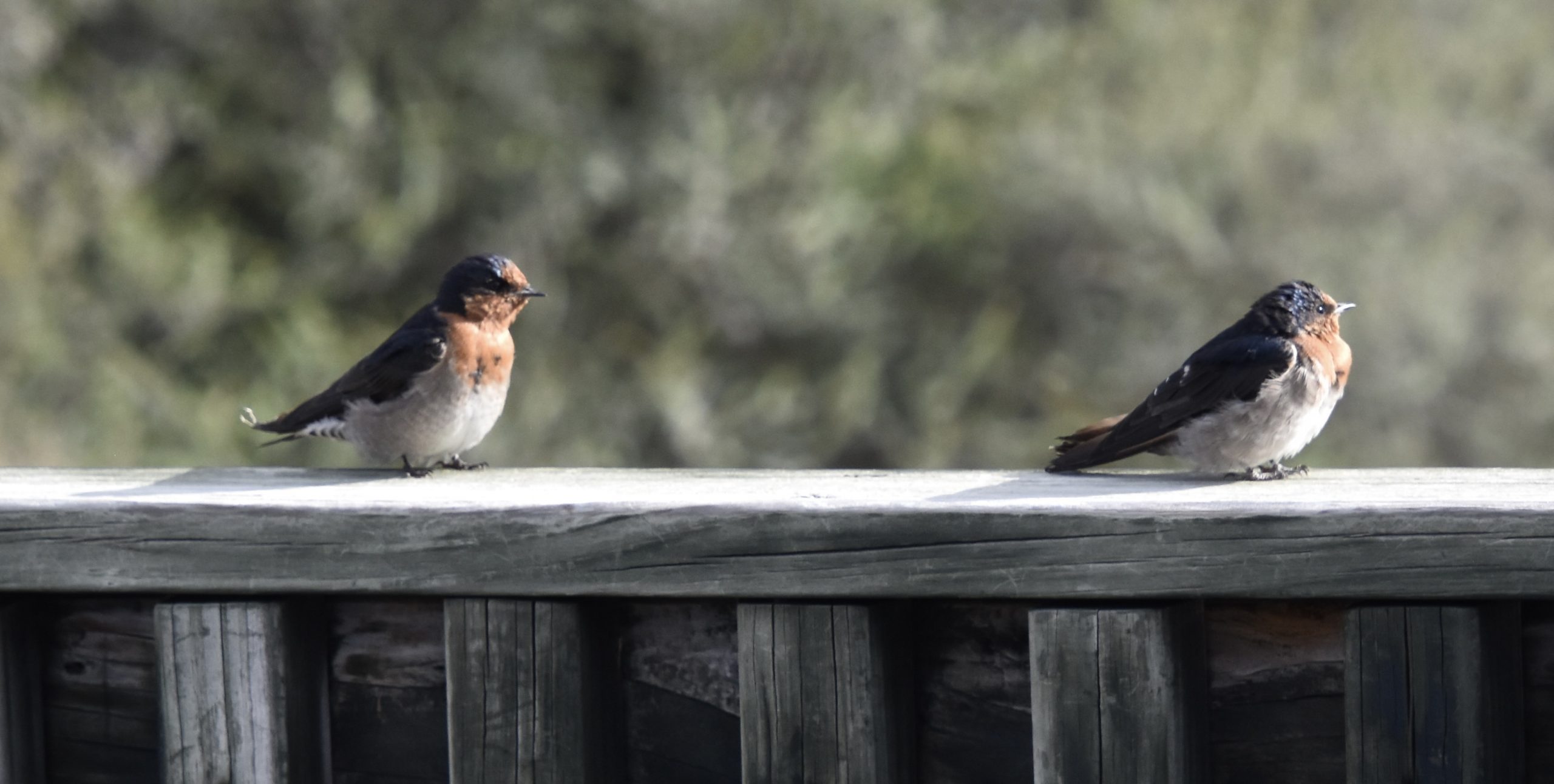
After our visit to Te Puia we checked into the Novotel in Rotorua, but the day was far from over as our Maori experience was about to continue and become even more exciting.
Te Pā Tū Maori Experience
Our group is picked up at the hotel and transported by bus to a traditional Maori gathering place Te Pā Tū about fifteen minutes away where we will participate in an award winning visitor experience for the next three hours – that is if we can even get in. On the way there our Maori driver tells us to elect our own rangatira (chief) and Chris easily wins the crown. The driver then explains in great detail how Chris must act upon coming face to face with the Te Pā Tū rangatira. Failure to carry out the greeting ritual or pōwhiri properly would be an insult and we could be sent packing or worse.
This is the sight that greeted us as we approached the entrance.
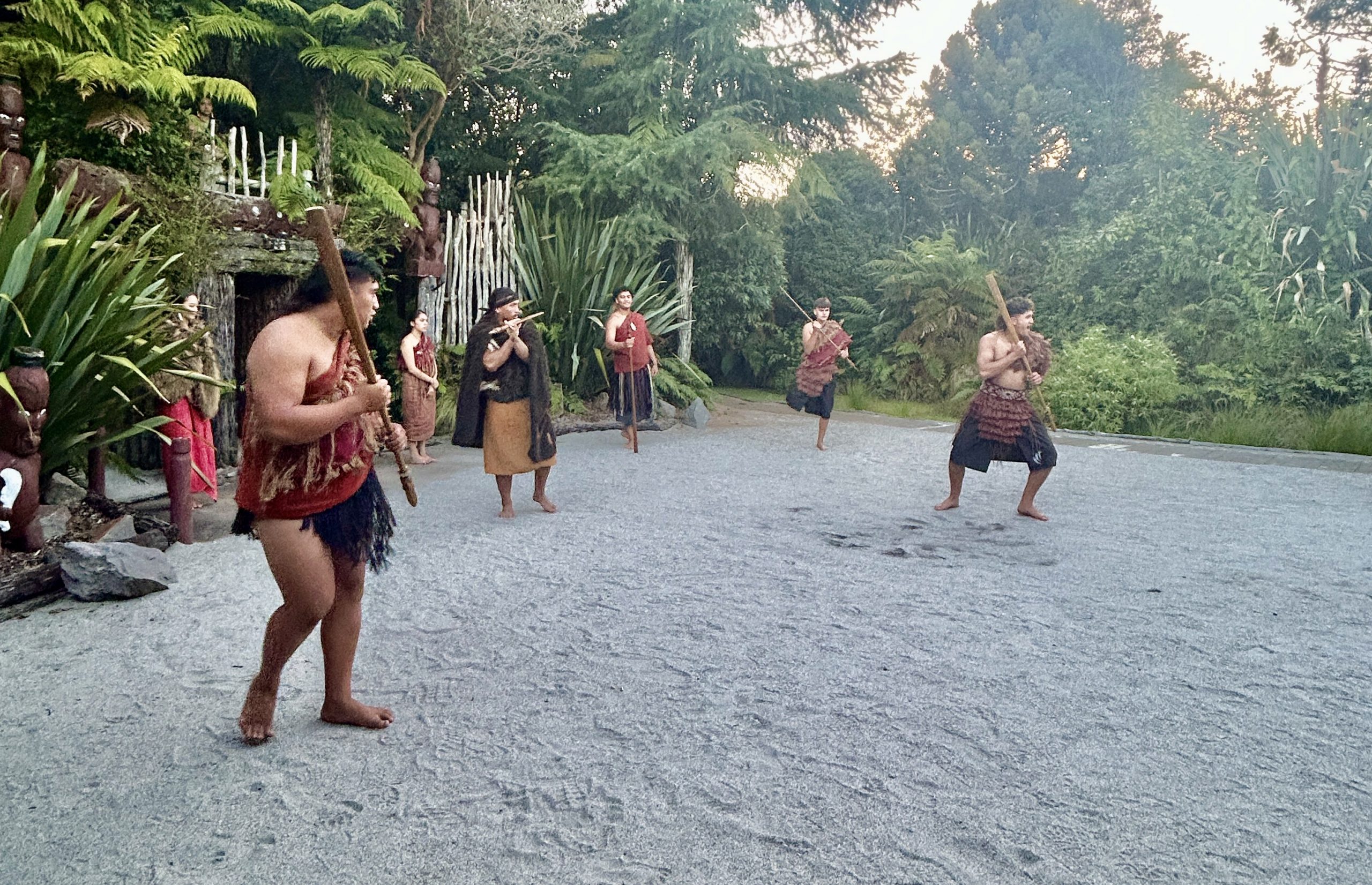
After preliminary shouting by both Maori men and women, the rangatira needs to know if we come in peace and in order to determine this he lays a fern at Chris’ feet. Our guide had stressed how important it was that our rangatira not break eye contact with theirs while picking up the fern with his right hand. As you can, see Chris aced the test and we were welcomed in.
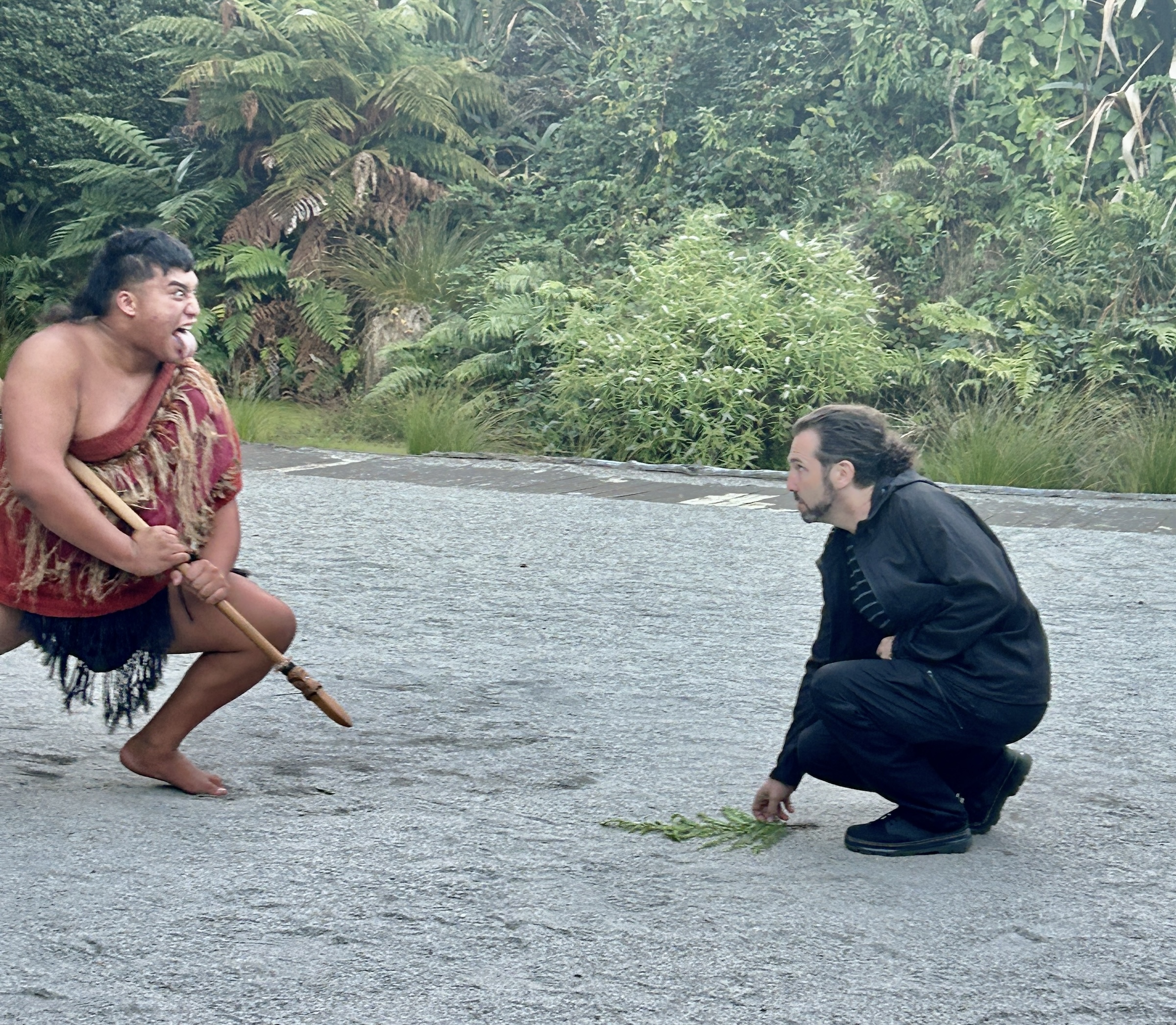
Once inside we along, with other visitors, were divided into smaller groups and invited to participate in a number of traditional Maori games and past times. This is one our gracious hosts.
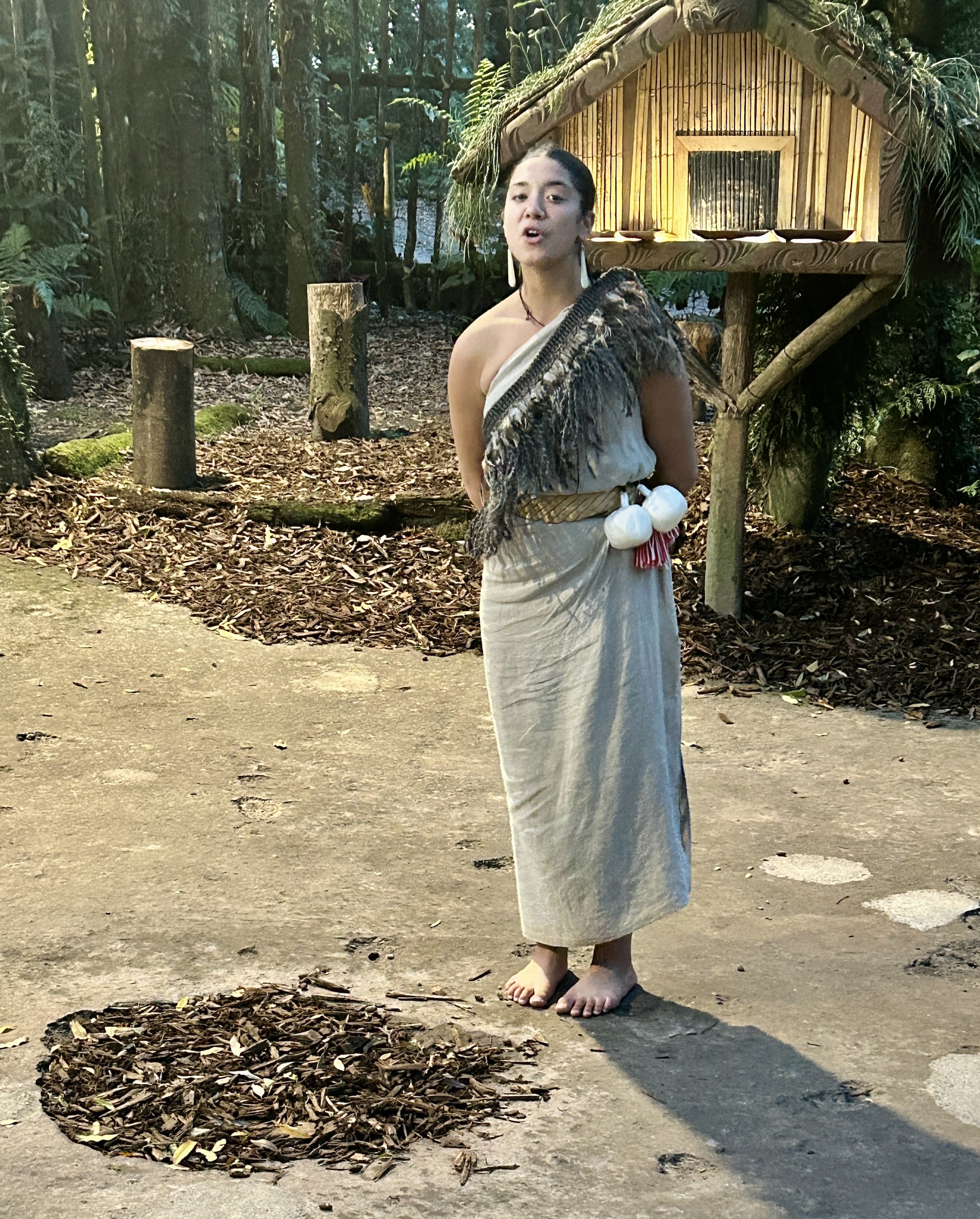
For about ninety minutes we made fools of ourselves, like this attempt to look like fierce Maori warriors, but hey the jacket looks great!
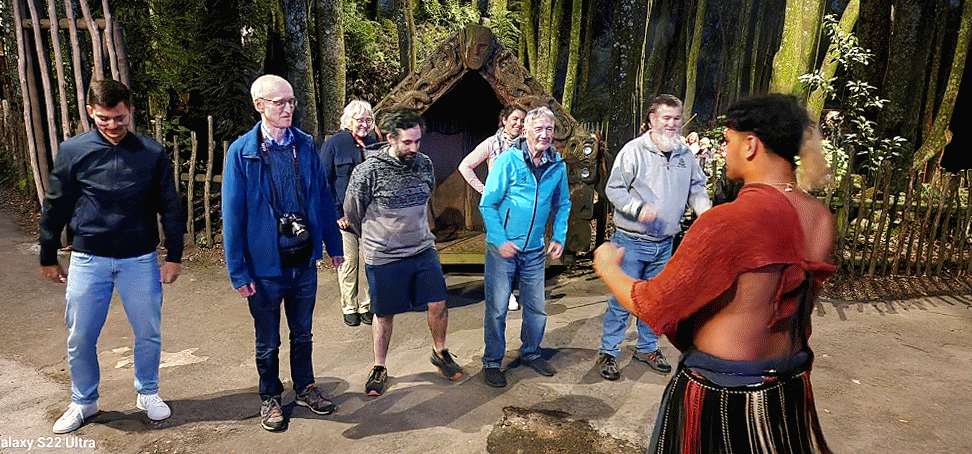
Somewhat exhausted, a bit humiliated by our incompetence and with a lot of respect for the Maori prowess at these things, we were invited inside for dinner and a show. I’m not going to go into any more detail about the various things we tried our hand at and mostly failed, it should come as a surprise when you get there.
The Maori, like Polynesians everywhere we’ve travelled, are very musically inclined and have beautiful voices. We enjoyed a combination of love songs that showed their gentler side.
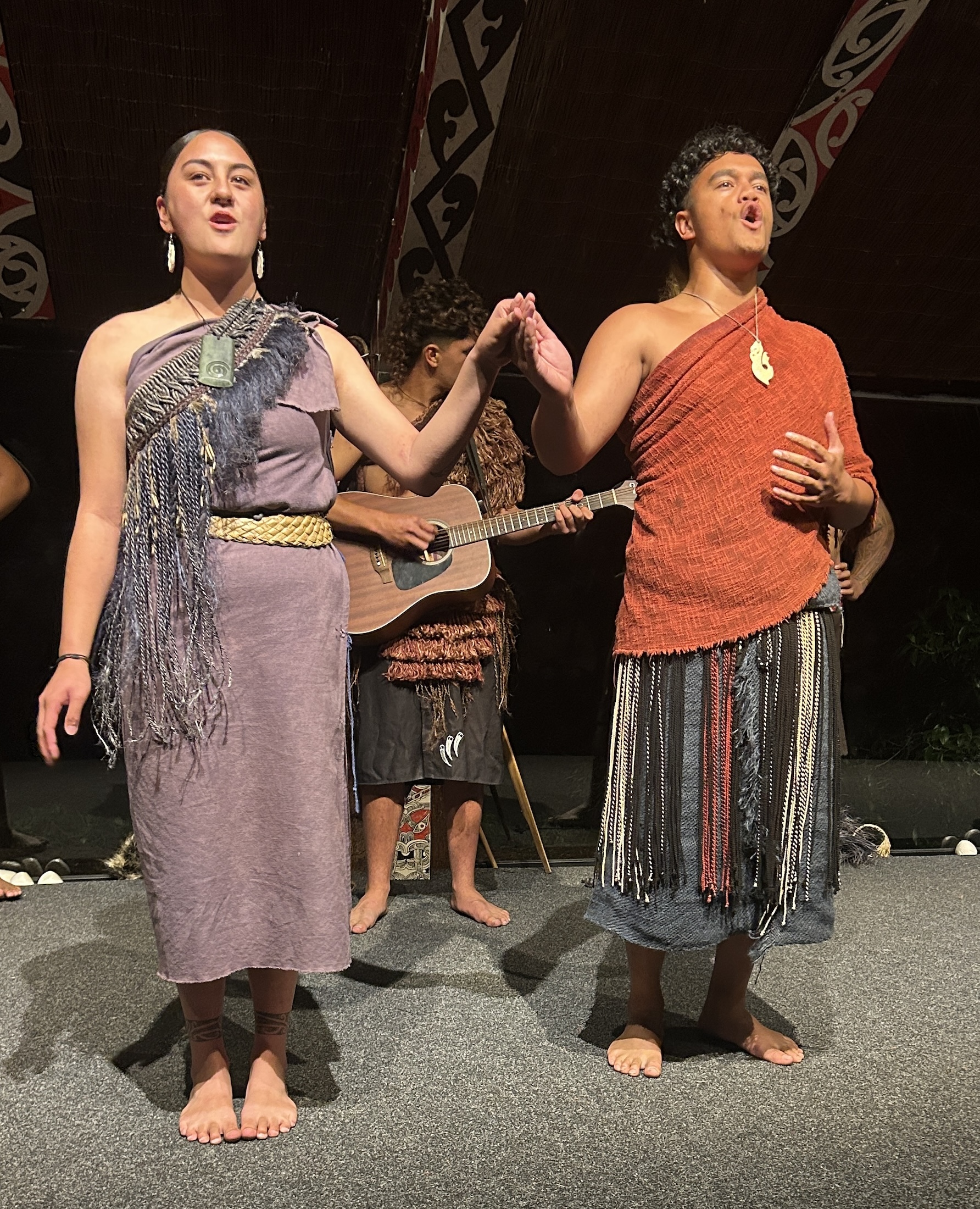
And their darker side. This is a demonstration of the haka which if you are a rugby fan, you have no doubt seen the New Zealand All Blacks do the haka before a big game. It is a Maori tradition that goes back centuries and was meant to scare the shit of out prospective opponents. The most distinctive part of the haka is the tongue protrusion and the eyeball popping which are both captured in this photo. Boy, I wouldn’t want to make her mad – that’s as close to a look that could kill as I’ve ever seen.
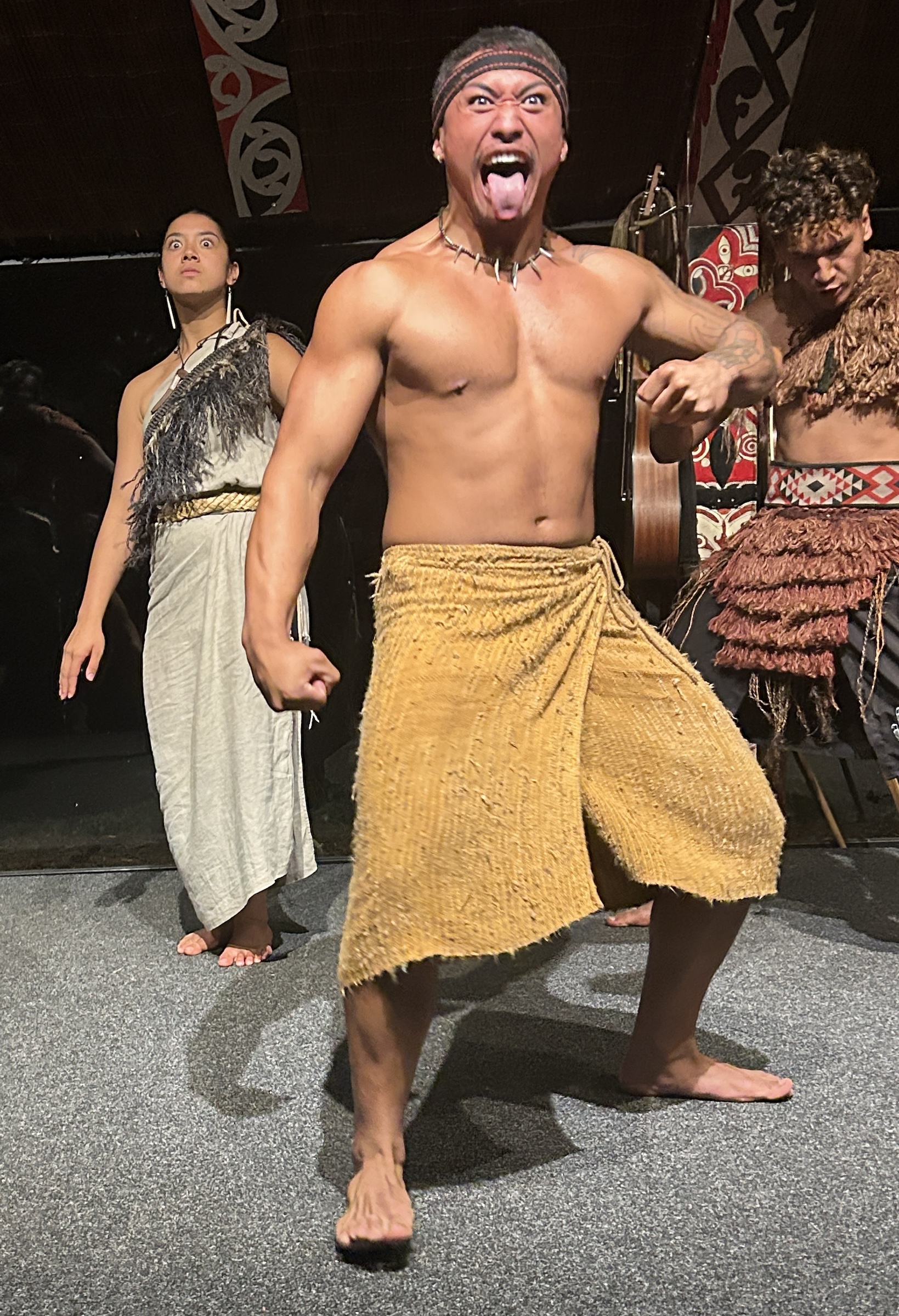
The meal concluded with a triple header of crème brûlée, panna cotta and New Zealand’s own contribution to the dessert world, pavlova – three of my favourite desserts.
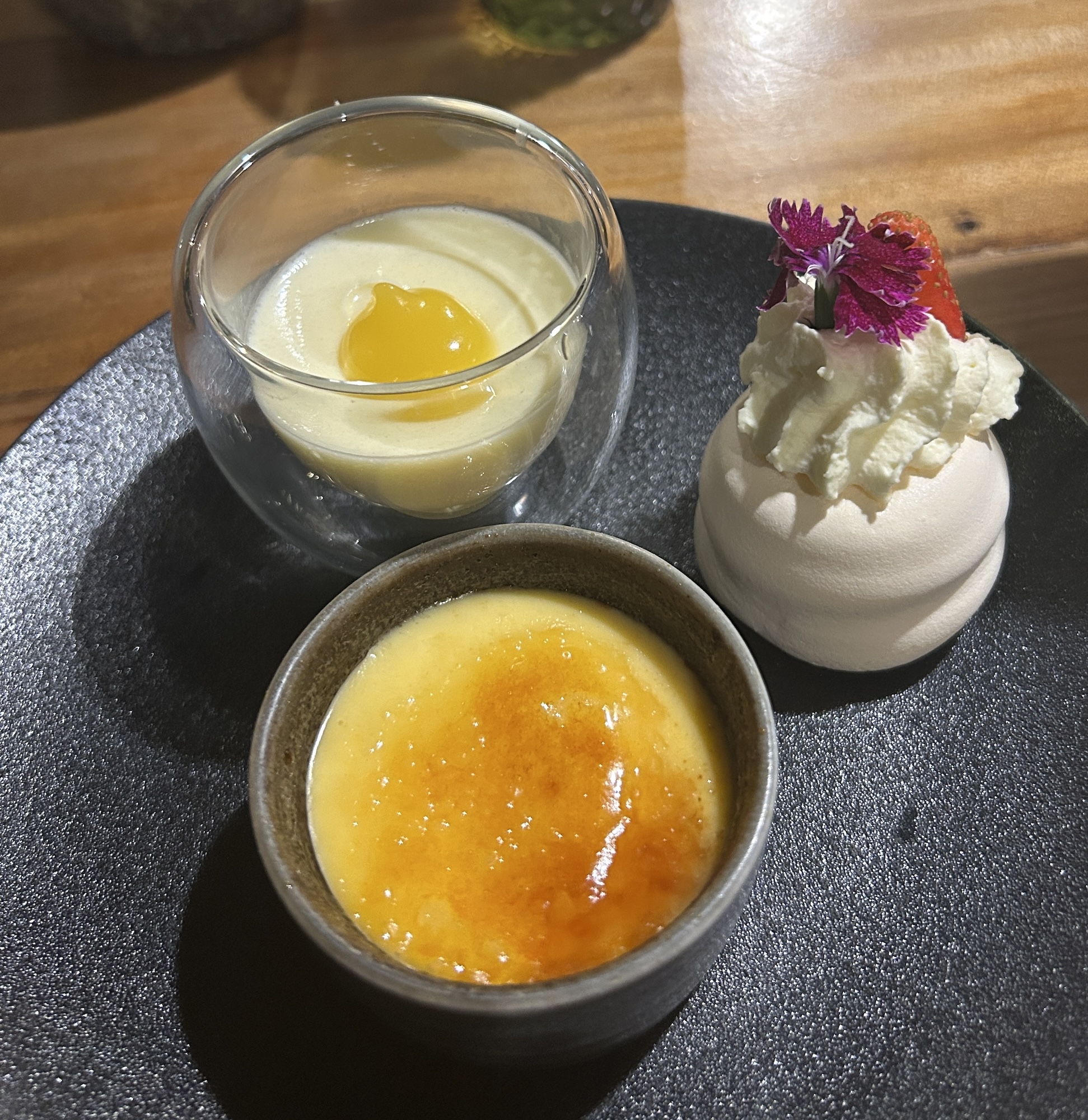
It had been a wonderful day from start to finish and I think we all came away with a better appreciation of Maori culture and its continued importance for New Zealand tourism.
In the next post we’ll head to New Zealand’s capital city, Wellington. Hope to see you there.


